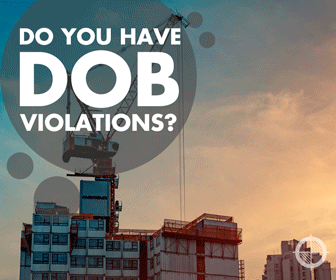
Don’t Waste Your Energy! New Workbooks for Prescriptive Energy Conservation Measures
In the effort to enforce carbon neutrality by 2050, Local Law 97 (LL97) has introduced a variety of new restrictions for New York City buildings that will take effect in 2024.
The proposed carbon limits grow increasingly stringent every year — by 2030, the city will require a major, 40% reduction in carbon emissions produced by buildings. This goal may prove difficult for many building owners. In order to support and sustain affordable housing options as energy consumption restrictions become tighter and tighter, LL97 will allow an alternative pathway for certain covered buildings* to meet compliance.
Affordable and rent-regulated buildings may opt to implement Prescriptive Energy Conservation Measures (PECMs) as a more attainable course of action. PECMs reduce the energy consumption of particular pieces of equipment to lower a building’s overall energy use.
Buildings must begin implementing PECMs by this upcoming winter, December 31, 2024, and evidence of compliance must be reported by May 1, 2025. Deadlines are fast approaching, so make sure to determine how these restrictions will affect you before the summer is over!
Required Energy Conservation Measures
PECMs are often forms of renewable energy, but can also include more efficient appliances and building systems. Not only are these conservation measures beneficial for the environment, they are also practical, cost-saving upgrades for tenants and building owners alike.
The following are acceptable PECMs as defined by NYC local law:
- Adjusting temperature set points for heat and hot water
- Repairing all heating system leaks
- Maintaining the heating system
- Installing individual temperature controls or insulated radiator enclosures
- Insulating all heating and hot water pipes
- Insulating the steam system condensate tank or water tank
- Installing heating system sensors and boiler controls
- Replacing or repairing steam traps
- Installing or upgrading steam system master vents
- Upgrading common area lighting to comply with NYC Energy Conservation Code
- Weatherizing and air sealing where appropriate
- Installing timers on exhaust fans
- Installing radiant barriers behind all radiators
By prioritizing these critical measures of energy conservation, covered buildings can comply with LL97 without struggling to keep up with the increasing benchmarks.
Covered buildings that decide to implement PECMs must show proof in a detailed report, certified by a registered design professional. The DOB recently released the report workbook for buildings to document PECM numbers 4, 7, 8, and 9 by the upcoming 2025 deadline.
Which Buildings are Covered?
Under Article 321, covered buildings are subject to reporting PECMs. In order for a building to be considered “covered,” it must be at least one of the following:
- A rent-regulated accommodation
- A religious house of worship
- Owned by a housing development fund company (HDFC)
- A project-based federal housing building that is:
- over 25,000 (2322.5 m2) gross square feet, or
- one of two or more buildings on the same tax lot that together exceed 50,000 gross square feet (4645 m2), or
- is one of two or more buildings held in the condominium form of ownership that are governed by the same board of managers and that together exceed 50,000 gross square feet (4645 m2)
There are two main exceptions to this definition; electric or steam power facilities, and certain attached, detached or semi-detached dwellings under 3 stories, for which HVAC systems are maintained by individual dwelling unit owners. At this time, these types of properties are not required to comply with LL97 in any way. For more information about these exemptions, please consult an expert to ensure your property is operating according to the law.
Conclusion
Green energy is more than just a remedy for a global crisis — it’s a long-term investment for a more efficient future. For expert assistance with understanding Local Law 97, or for any other building code and zoning concerns, contact Outsource Consultants, Inc.
Resources








